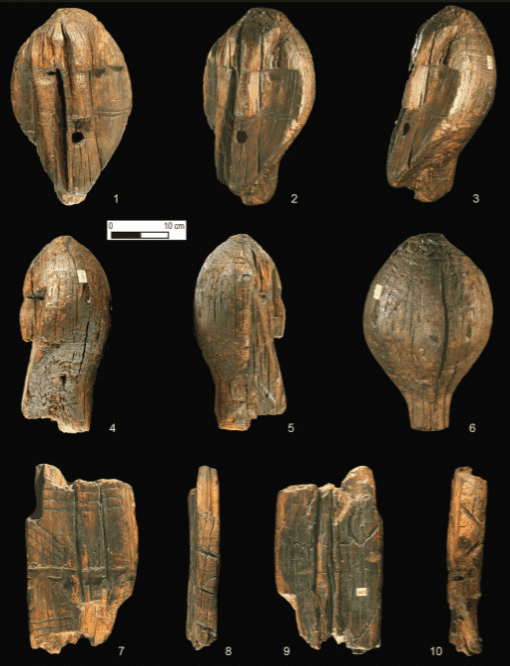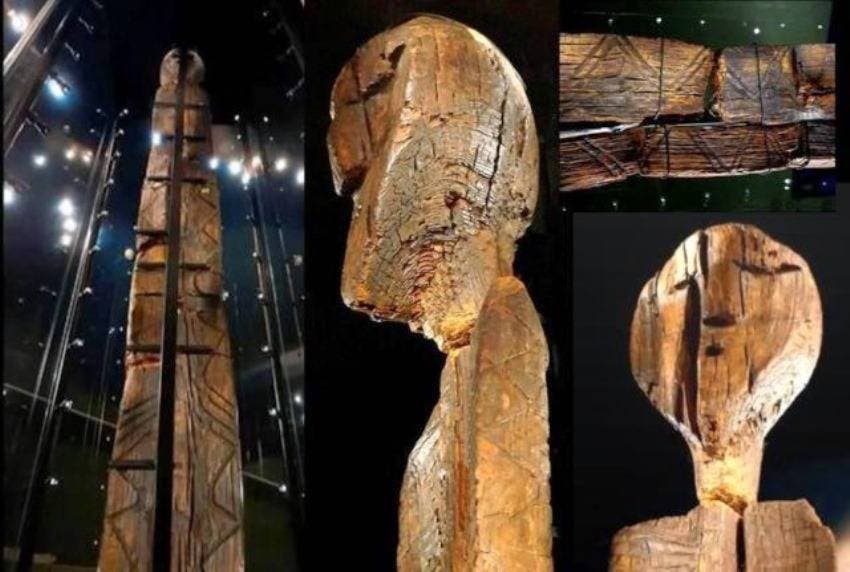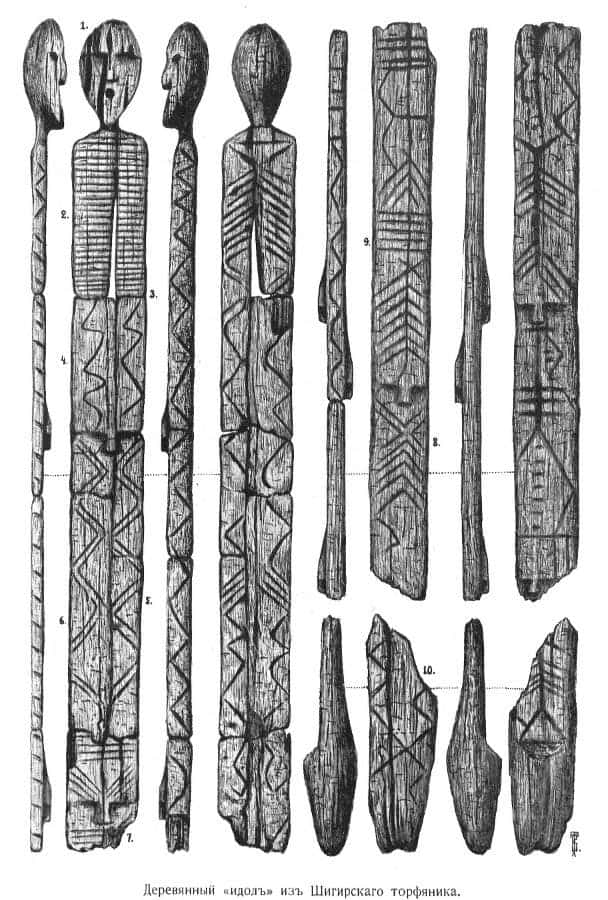A tall human-like sculpture discovered in Russia in the late 1800s is more than twice as old as the Egyptian pyramids, a new paper reports.

Credit: E.F. Tamplon; Antiquity 2018
The first pieces of the towering wooden construct, dubbed the Shigir Idol, were discovered by gold miners working in the eponymous peat bog in the Urals sometime in 1894. In the late 1990s, the Idol was radiocarbon dated for the first time, revealing it was about 9,900 years old — making it the oldest wooden monumental sculpture in the world.
However, this dating wasn’t reliable, as it was performed on material samples harvested from only two pieces of the idol. Now, more exhaustive dating efforts have revealed that the Shigir Idol is much older than previously thought. At an impressive 11,500 years of age, the sculpture is over twice as old as the Great Pyramid and was likely sculpted at the end of the last ice age.
In addition to more accurately establishing the idol’s age, the team also report finding a previously-unknown face carved into its surface, said study co-researcher Thomas Terberger, an archaeologist at the State Agency for Heritage Service of Lower Saxony, in Hannover, Germany.

Researchers first began studying the figure, carved from several pieces of larch wood after it was first recovered from the Shigir peat bog. Put together, they stood more than 5 meters (17 feet) in height. Some of its sections have since been lost, so the idol now stands about 3.4 m (11.1 feet) high, Terberger said. The human-like figure is currently on public display at the Sverdlovsk Regional Museum.
“When I visited the Sverdlovsk Regional Museum for the first time, I was completely surprised by seeing this large wooden sculpture on display in the exhibition,” Terberger told Live Science. “If you come closer to the sculpture, you will notice that the ‘body’ is decorated by geometric ornamentation and a few small human faces.”
Research in the early 1900s recorded the pieces’ shapes and sizes in illustrations, which noted the five faces carved along its surface. Svetlana Savchenko, a co-author of the current paper and researcher at the Sverdlovsk Regional Museum identified a sixth, animal-like face carved into the wood back in 2003. Working alongside Mikhail Zhilin, first author of the current paper, Savchenko then discovered a seventh face carved in the wood in 2014.

The carved faces suggest that the early peoples of Eurasia were deliberately creating art, possibly spiritual or religious in nature, during the early Mesolithic. Its sheer size meant it was easily visible to the community, although it’s difficult to prove its exact purpose or the mythology it was a part of.
The team says that while many researchers scour the Fertile Crescent in the Middle East in hopes of understanding early humans, the Shigir Idol stands as proof that the search should be widened.
The paper “Early art in the Urals: new research on the wooden sculpture from Shigir” has been published in the journal Antiquity.


